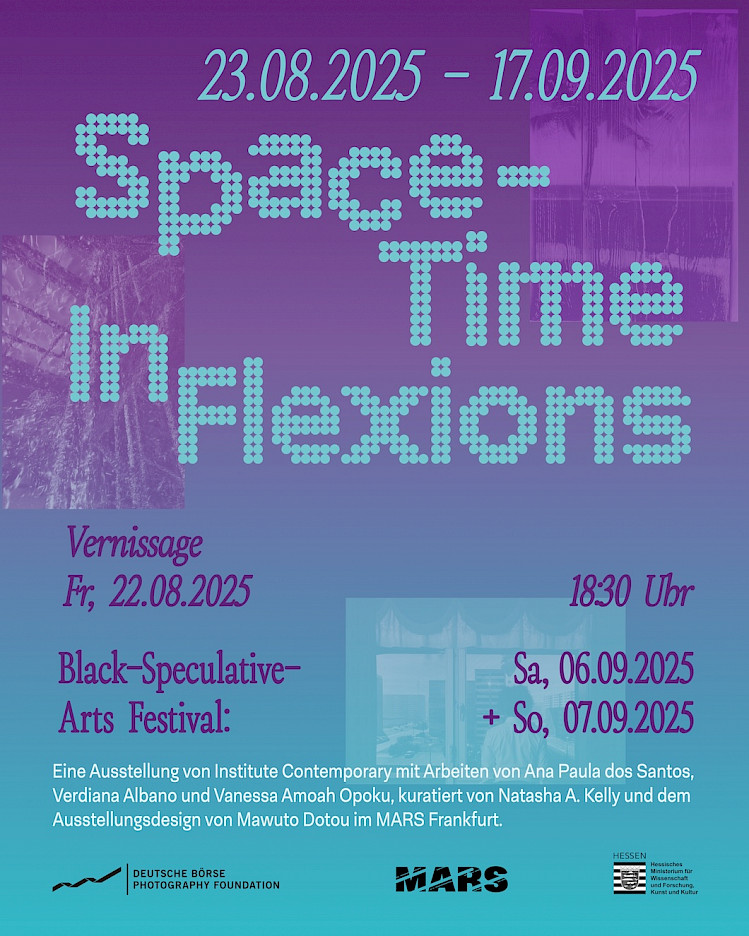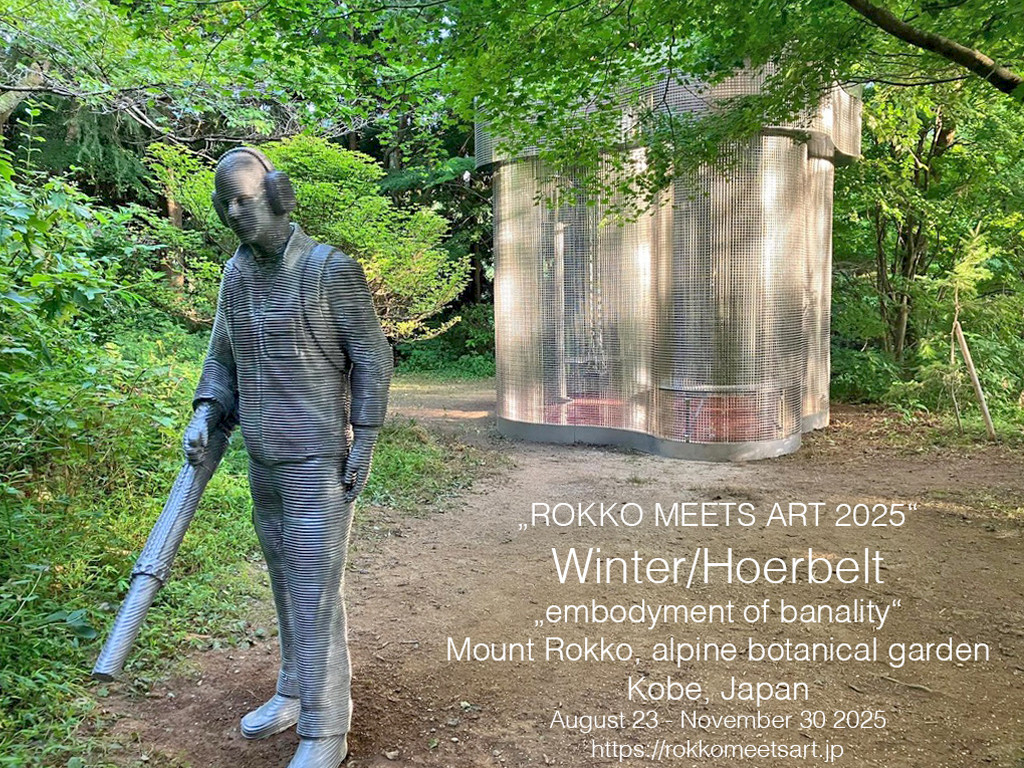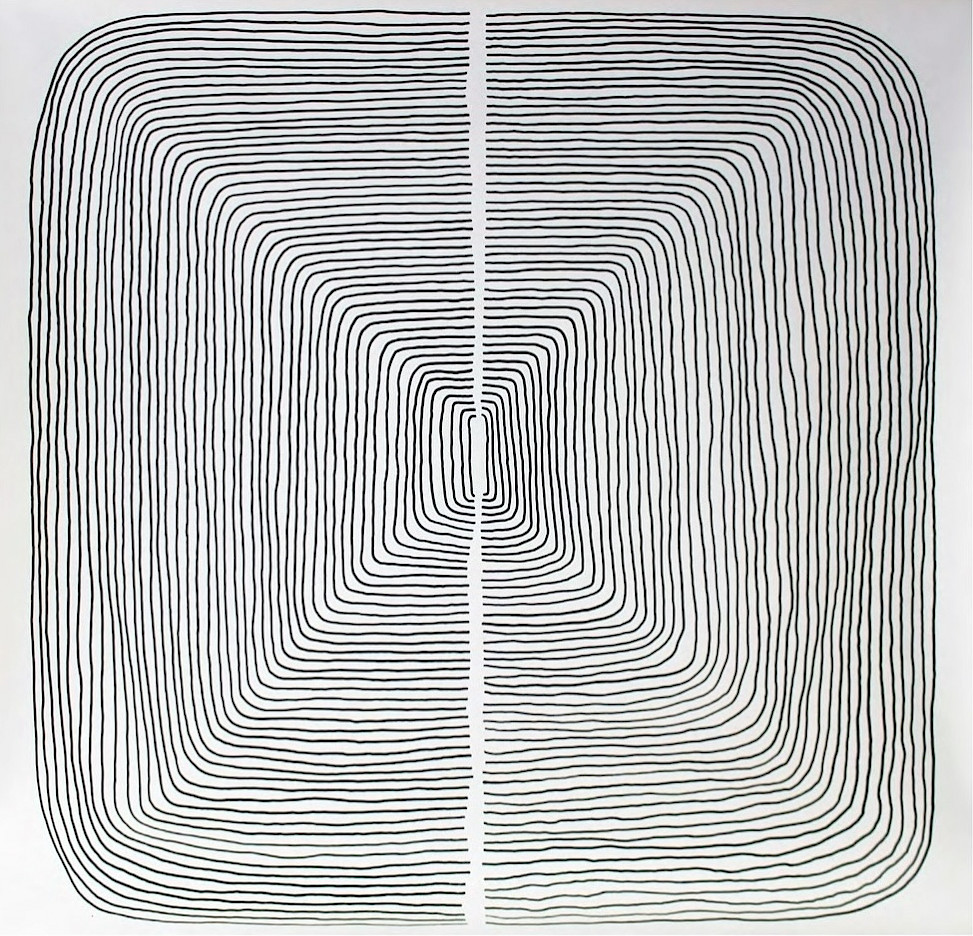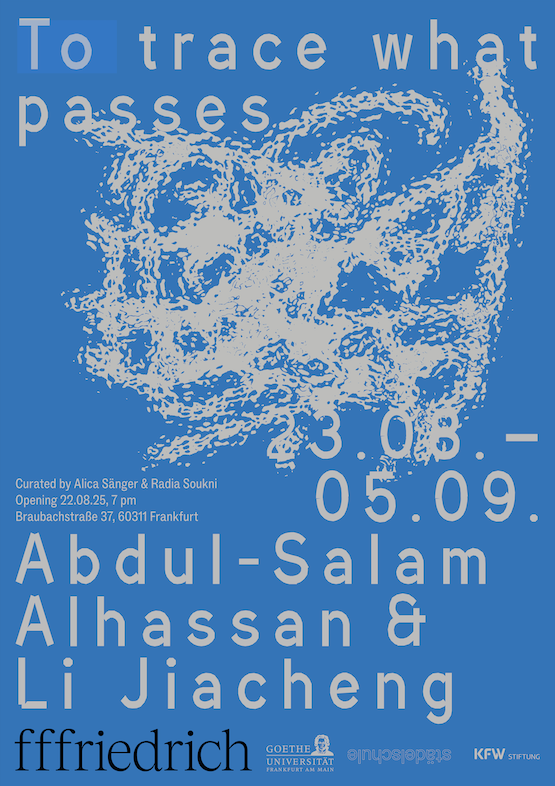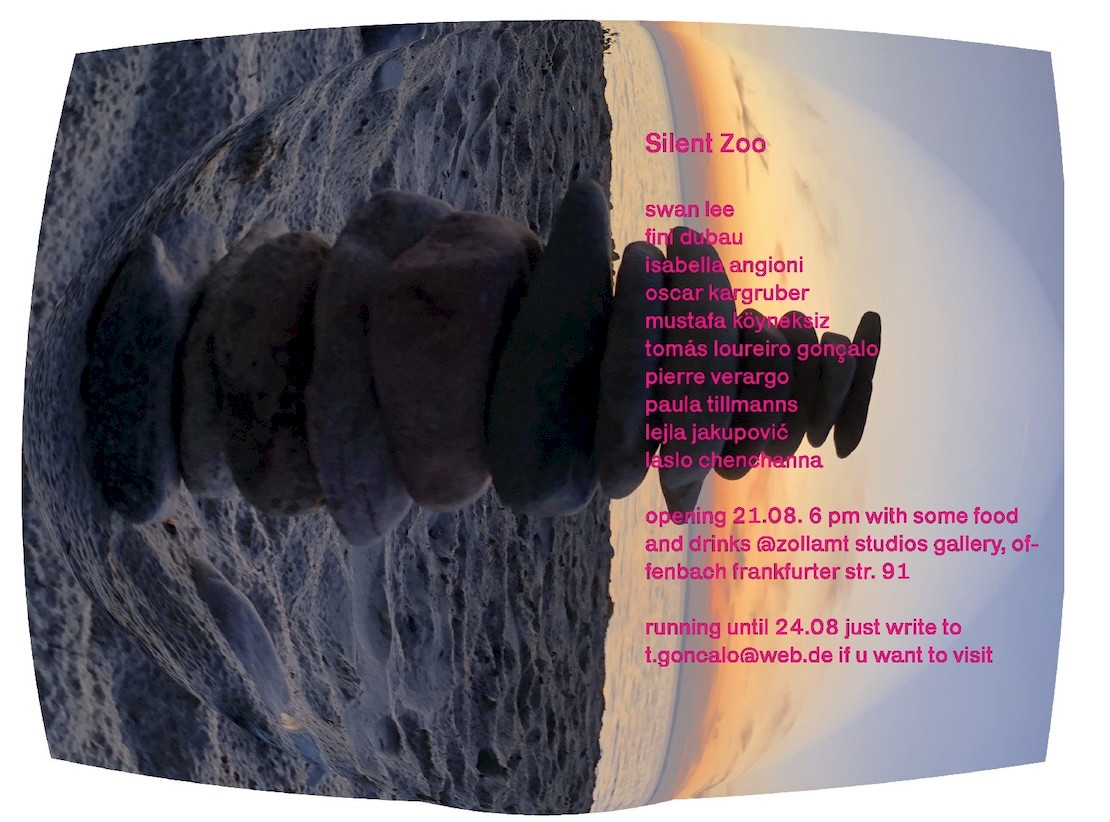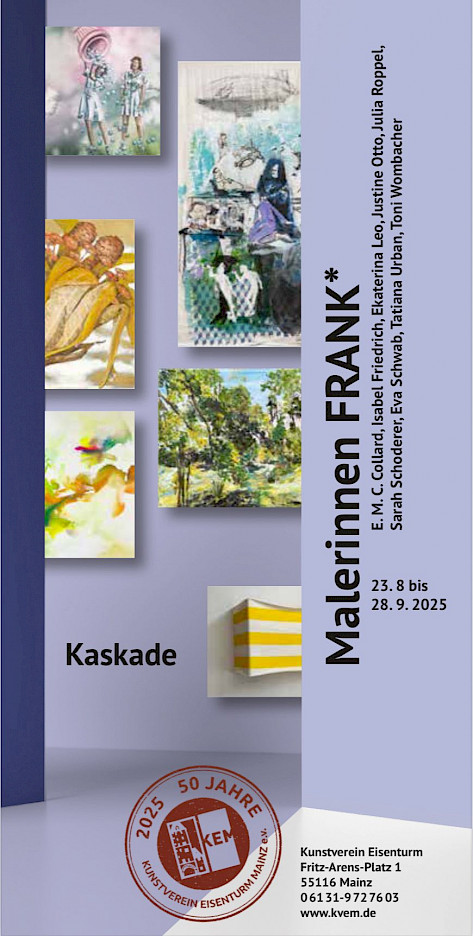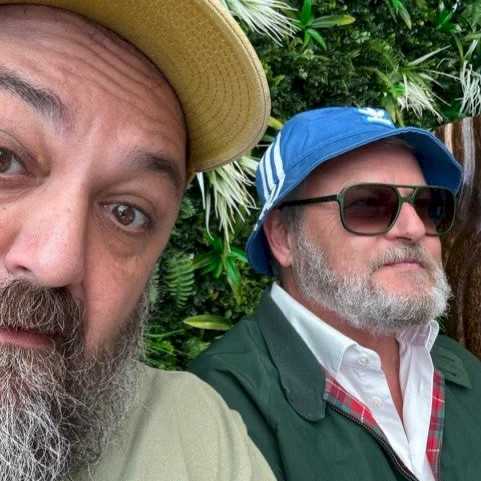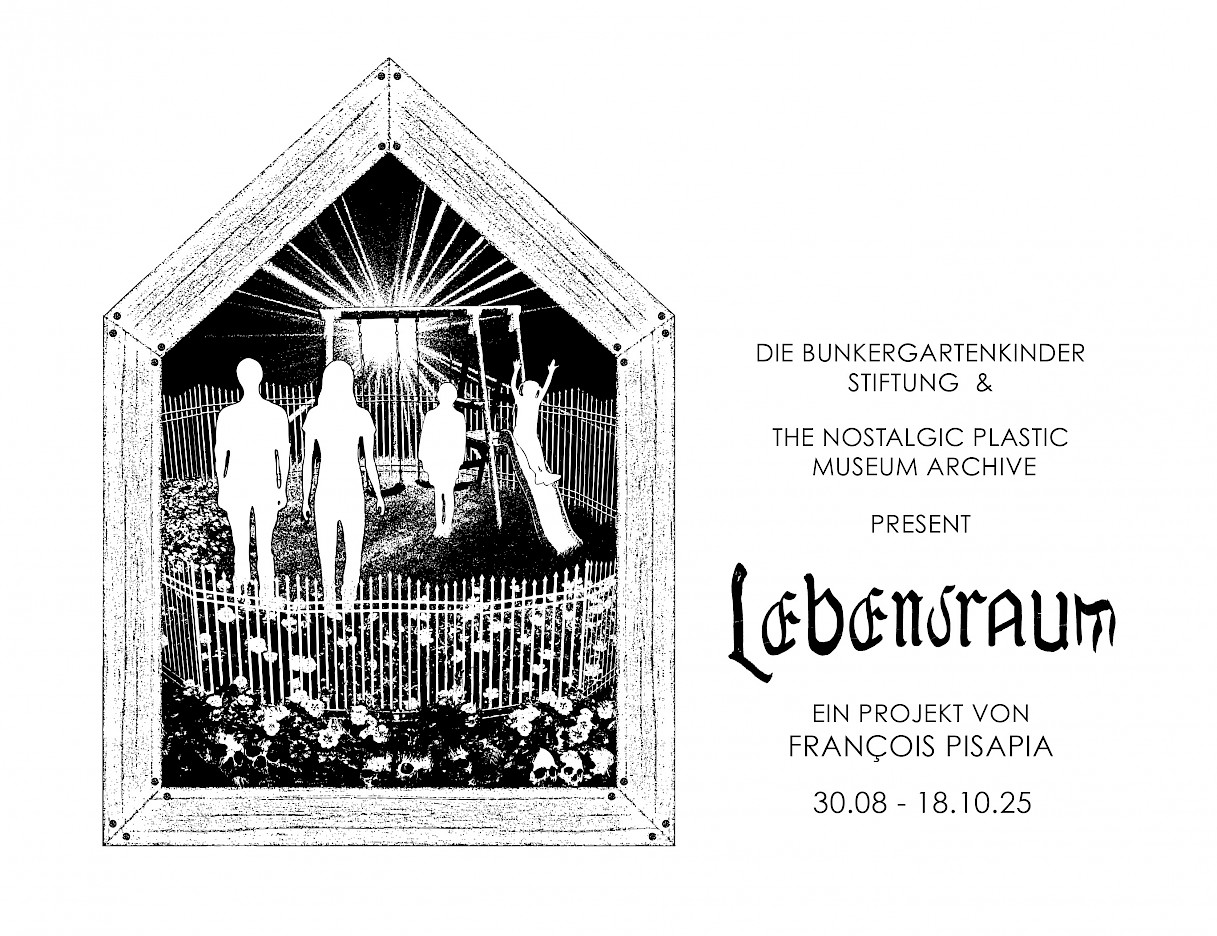Suzanne Dellal Center for Dance and Theater in Tel Aviv opens its doors (and its backyard) as part of Loving Art. Making Art. festival 2021 to present an array of video works exploring notions of movement, choreography, and the moving body. The spectrum of works expand from works of video dance made by choreographers with professional dancers to videos that think of and with notions of choreography but their creators come from different fields. 12 local and international artists were invited to present their works on screens that were positioned across the center, alluring the visitors to sway amongst them and be exposed to drifts that will move them from side to side, up and down, and inside out.
Exhibition hours:
Thursday 18:00-23:00
Friday 10:00-17:00
Saturday 10:00-23:00
Performances of Dancing Outside:
Thursday 18:00, 21:30
Friday 12:00, 13:15
Saturday 16:00, 18:00, 20:00
The Exhibition
In the middle of the courtyard, three works are presented one after the other on a single screen, all touching upon one of the most commonly felt sensations of the passing year – suffocation. In the video “Outside” by choreographer Inbal Pinto and writer Etgar Keter, the blurring of inside and outside following the pandemic that turned the world on its head explores the sensations of bewitching claustrophobia. In the video work “TAXI!” by director-choreographer Celia Rowlson-Hall, it is the big city that traps the character in the vicious daily survival circles within the urban jungle. Inspired by an often neglected scene from Shakespeare’s Rome and Juliet, choreographers Bobbi Jene Smith and Or Meier Schraiber placed classically-trained New York City Ballet Principal Dancer Sara Mearns in the shoes of Juliet as she is consumed with passion in a kinetic interpretation of her moving soliloquy. In each of these works the protagonists try to expose and oppose with their bodies to the sensations and situations that enclose them.
Other screens are spread across the yard and function as reference points that offer an expanded notion of choreography. The video work of the renowned Argentinian conceptual artist Miguel Angel Rios – “Untitled (the ghost of modernity)”, offers a perspective on choreography that arises from a non-human object that is carried away on the winds of history. In “standing still”, a video by German artist Jonas Brinker, the controlled movement of the tamed wolf provokes thinking of choreography in relation to power and control. The rollerskater in “Night in Bunker Gardens”, a re-edit of a video work by Canadian artist François Pisapia, the androgenic character slides across the backdrop of contemporary Berlin, composing tensions between resistance and exposure, between the public and the social, the personal and the imaginary. From the depth of the well, the sonic waves of Israeli sound artist Zoe Polanski are being emitted, provoking thoughts on sound as a spatial movement leading to an acoustic phenomenon. The site-specific soundscape is constructed and deconstructed with every wave that stretches upwards and interweaves with itself. This is movement in its most abstract form – fluctuation of wind that suddenly encounters a body and making it move, vibrate, from within.
With works by Bobbi Jene Smith & Or Schraiber, Cibelle Cavalli Bastos, Celia Rowlson-Hall, François Pisapia, Inbal Pinto & Etgar Keret,
Jonas Brinker, Miguel Angel Ríos, Oren Fisher, Tair Uria and Zoe Polanski.
The Artists
Inbal Pinto & Etgar Keret
The dance film ‘Outside’, an Israeli-Japanese co-production, shot simultaneously during the Coronavirus pandemic in Tel-Aviv and in Tokyo, features Israeli and Japanese actors, musicians, and dancers, among them the Israeli dancer Moran Muller, and the famous Japanese actor and dancer Mirai Moriyama. Through an artistic prism, influenced by the ramifications of the COVID 19 pandemic on the lives of people all over the world, the film depicts individual feelings as well as the general-public sentiments that envelop all of us during this period of time. The film’s creators and collaborators, who come from different worlds, bring together their artistic points of view, aiming to find new multidisciplinary approaches for the creation of art and communication between people, under the new restrictions and closed borders, imposed by the global pandemic.
Inbal Pinto is a choreographer, director, and set and costume designer. In 1992, she established the Inbal Pinto Dance Company, in which she was artistic director until 2018. Until that time Pinto presented many dance works including Dio-Can, Wrapped, Oyster, Fugue, and many others which became cornerstones in the evolution of Israeli Dance and received raving reviews in both Israel and abroad. In 2002 she began collaborating with Avshalom Pollak and aside from creating many dance works, the two choreographed, directed, and designed operas and musicals around the globe. Since 2018 Pinto is working as an independent artist and recently, together with Amir Kliger, she designed and directed a musical based on The Wind-Up Bird Chronicle by Haruki Murakami in Tokyo.
Etgar Keret. Born in 1967 in Ramat Gan, Israel. Keret’s books were translated into more than 45 languages and were very successfully received both in Israel and around the world. His writings were published in The New York Times, The Guardian, The New Yorker, Le Monde, among others. Keret lives in Tel Aviv and is a Professor at the Ben Gurion University in the Negev. Over 100 short films, made around the world, were based on his short stories. He received the Book Publishers Association’s Platinum Prize several times, the Chevalier (Knight) Medallion of France’s Order of Arts and Literature (2010), the Neuman Prize (2012), and the St Petersburg Foreign Favorite Author Award (2010). In 2007 Keret and his wife Shira Geffen, directed ‘Meduzot’ (Jellyfish). The film won the Caméra d’Or (“Golden Camera”) award in Cannes Film Festival. The two also wrote and directed together ‘The Middleman’ (2019) an Arte mini-series that won the Best Script award at Les Francofolies De La Rochelle Festival, France. Keret is the winner of the Bronfman prize 2016. His book ‘A Fault at the Edge of the Galaxy’won the 2018 Sapir Prize.
Celia Rowlson-Hall
TAXI! is a jam packed three minute wild ride of movement and madness as a man, late to work, gets stuck on a bridge in traffic. Dancer Or Schraiber embodies the madness of an unstoppable routine in a large and alienated metropolis. The suffocating sensation that grips him in the taxi erupts with impressive virtuosity, freeing him and the viewer from its formidable hold and celebrating the body smashing like a wave on the city’s sidewalks.
Bessie Award winning Celia Rowlson-Hall is a director-choreographer whose courageous personal work admits a restlessly inquisitive, feminist voice, a flare for iconic imagery, and a capacity to easily glide from art-house to playful, popular fare. Bringing her experience of choreography and performance to the screen, Celia has written and directed numerous short films and videos, which have earned her several awards including an Emmy nomination, as well as screened at festivals such as Sundance, Venice, SXSW, SFIFF, Dance on Camera at Lincoln Center, and art fairs such as the Armory Show, Performa, and the New Museum.
Bobbi Jene Smith & Or Schraiber
Inspired by an oft-neglected scene from Shakespeare’s Romeo and Juliet that most dance and film interpretations leave by the wayside, GALLOP APACE explores the depth of Juliet’s inner strength and multifaceted emotions. Classically trained New York City Ballet Principal Dancer Sara Mearns effortlessly embodies the choreography of Bobbi Jene Smith and Or Schraiber in this kinetic interpretation of Juliet’s moving soliloquy.
Bobbi Jene Smith is an alumnus of The Juilliard School, Her choreography has been presented by various companies, amongst them The Batsheva Dance Company, LADP, and The Martha Graham Dance Company. In 2017 she became a founding member of the American Modern Opera Company (AMOC). In 2019 she was awarded The Harkness Promise Award. Bobbi’s film and video work include, “Annihilation” directed by Alex Garland, “MA” directed by Celia Rowlson-Hall, and “Yossi” directed by Eytan Fox. The documentary “Bobbi Jene”. Bobbi has been a certified GAGA teacher for the past 15 years and has taught Ohad Naharin’s repertory in schools and universities around the world. She is part-time faculty at the Juilliard School and guest teaching at NYU and UArts.
Or Schraiber studied at the Jerusalem Academy of Music and Dance. In 2010, Or joined the Batsheva Dance Company. In 2017, Or moved to New York City to study acting at the Stella Adler Studio. In 2019, he joined the national tour of the ‘The Band’s Visit’. In 2020, he created five short dance films commissioned by the ‘Corpus Dance Company’ in collaboration with Bobbi Jene Smith. and created ‘Solo At Dusk’, a piece commissioned by the Los Angeles Dance Project. Throughout the years, Or’s choreography and movement direction have been seen in videos by Wim Wenders, Asaf Avidan, Netta Barzilai, The Antlers, Yemen Blues, and more. Or is a core member of the American Modern Opera Company, and a certified GAGA teacher.
Miguel Angel Rios
Miguel Angel Rios’ video “Untitled (the ghost of modernity)” was filmed on a deserted plateau high above a distant town in Zaachila Oaxaca, Mexico, and features a set of outlined cube structures built on the site and a transparent cube that floats through the landscape with a will of its own, as if magically suspended. The moving camera establishes a dialogue with the floating and rotating cube choreographed to music composed by John Cage in 1947 for the surrealist film by Hans Richter “Dreams That Money Can Buy”. Performed by Juan Hidalgo in pianoforte preparato (its notes muted), this untitled piece by Cage was among the first projects in which he explored the idea of silence systematically. “Untitled (the ghost of modernity)” employs the silence of the landscape, the empty walls of the structural cubes, and the transparent and reflective surfaces of the glass cube to immerse the viewers in a poetic mise en abyme of settled spatial perceptions. Was the project of modernization of the Americas based on the idolatry of an out worldly platonic figure? Is this ghostly geometric figure a lens through which the world can be reinterpreted? Or is it the paradigmatic principle of modernist thought that organizes the world around it? Are we inside or outside the cube? Askes Rios.
Miguel Angel Rios (*1943, Argentina/Lives in New York and Mexico) studied at the Academy of Fine Arts in Buenos Aires before moving to New York in the 1970s to escape the military dictatorship in Argentina. He subsequently relocated to Mexico and now divides his time between the U.S. and Mexico. In his work, Rios pairs a rigorously conceptual approach with a meticulously constructed, often handmade aesthetic. Since the early-2000s, Rios has also delved into the medium of video to create symbolic narratives about the human experience, violence, and mortality. His works have been exhibited and are represented in the collections of some of the most prominent museums in the world such as The Museum of Modern Art (MoMA), New York, NY, USA, and the Centro de Arte Reina Sofia, Madrid, Spain.
Jonas Brinker
The wolf in Jonas Brinker’s video work is a domesticated wolf that acts as a living marionette. The green screen background and the fake stone seem to expose the “behind-the-scenes” of the cultural image production. A choreography of control that relates to the way cinematic imagery is fictitiously created and to our relation of power to nature and the other. The work deals with the deconstruction and critic on the image of the untamed, wild, and free, represented by a wolf in advertising and film in Western culture. The movement of the wolf resembles that of a dancer following a structured choreography. However, we must remember that in contrast to a human dancer – the wolf is not a performer by choice.
Jonas Brinker (1989 in Bochum, Germany) obtained his Bachelor degree from Slade School of Fine Arts in London in 2015 and continued his studies at Städelschule Frankfurt in the class of Douglas Gordons and Willem de Rooij where he graduated as a Meisterschüler in 2018. While studying in Frankfurt he went on exchange to Bezalel Academy of Arts in Tel Aviv. Working in time-based media he is concerned with the interdependence between the natural and the staged. In his subtle observations, he captures and reframes tension-filled environments. His work has recently been shown at Frankfurter Kunstverein; Städelmuseum, Frankfurt; Palais de Tokyo, Paris; Goethe-Institut Israel and Berghain, Berlin.
Oren Fischer
‘Running Errands’ by Oren Fischer is part of a choreographed series of works titled ‘Anti-Dance’ that takes place in public bureaucratic spaces aiming to cure them of their frustrating and gray atmosphere.
Oren Fischer is an Israeli artist and social activist. He is known for his artistic and social activities in the public sphere and enclosed spaces of galleries and museums. His humorous gaze is evident in the graffiti, sculpture, painting, and installation works he has been creating since the beginning of his artistic career. He is one of the founders of the Red House and Meshuna Gallery in Tel Aviv. Following winning the Hammer Award at the Fresh Paint Fair 2019, in 2021 Fischer presented a comprehensive solo exhibition, ‘Neshamot’ (e.i. ‘Souls’), at Sotheby’s, Tel Aviv.
Zoe Polanki
Zoe Polanki’s sound works are weaving together audio waves that intertwine, collide and construct soundscapes from near and far, both foreign and familiar, which draw the listener in through spiral circles of repetition and volatility. The sounds and vibrations emanating from the well at Suzanne Dellal embellish the movement of sound waves through space, dancing, and swaying. Floating and rising from the depths of the well like sonic pillars that color the passing of time. Polanski’s sound installation is reminiscent of the transcendental moment at Mount Sinai, in which it is said that “The people saw the voices.”
Zoe Polanski is a musician, composer, producer, guitar player, and singer. Her music travels between the worlds of Ambient, Electronica, and Post Rock. It was described as a “trip through the geography of musical time” (Ben Shalev, HaAretz, 2017) and as having a “dimension of blurriness and fog yet precise and stylistic. Like modern music” (Yali Sobol, HaAretz, 2017). Polaski produced three solo albums, the third of which was published n the summer of 2020 in the American label Youngbloods. She composed soundtracks for works of fine arts, dance, and film. In 2020 Polanski was awarded the Rosenblum prize for performing arts from the city of Tel Aviv in the “Young and Promising Artists” category. In the same year, she was awarded a grant from Mifal HaPais.
Tair Uria
A crocodile, that emerged from a childhood memory or from a distant story, shed any burden of reality, and in an imaginary occurrence developed independence.
As an imaginary occurrence, it has its own logic.
While the crocodile materializes, whether in iron or in editing software,
encounters and clashes create new platforms for her to form.
In her unique manner, the crocodile tells the story of the unknown and the unconscious,
(and I – try – not to interfere with them).
In her installation “Crocodiled Algorithm”, Tair Uriah offers a perspective on movement that is realized through a mechanical or virtual apparatus that runs individual images continuously one after the other – producing an imaginary movement. This movement animates both the crocodile and the swimmer and opens up a parallel and mysterious space that invites the viewer to jump inside the pool and dive into the surrealistic depths of the moving image.
In her creative process, Tair Uria (*1994 Jerusalem, Israel. Lives and works in Tel Aviv) explorers the intersections of video art, sculpture, and drawing. She sees the mediums as windows into a direct intuitive activity that transcends thinking and language. Her works are produced as a distorted mechanism, rich in imagination, desires, and fears, and often combine simple mechanics from day to day into a moment with its own logic. The works echo existential experiences between the tragic and the comic, experiences that are broken and defective, monotonous, and yet full of joy.
Cibelle Cavalli Bastos
The two video works by Mx. Cibelle Cavalli Bastos explores the powers that operate on us. In the work DATA.DRIVEN an avatar is moving around in a virtual setting. Between glitches and gravity-less flotation, the questions raised relate to the hand which controls the character’s movement. Who is she? Who are they? And what is the connection between them and the avatar itself? Similar questions are provoked by the video “a” not “I” per-form in which the artist covers themselves up with different pieces of clothing and fabric. When fully covered, they take on different postures – some iconically masculine, some feminine. Here the question also relates to the choreography of the self – how do we cover up, operate and move. What part of these actions and movements falls under free will, and which parts are simply succumbing to society’s gaze?
Mx. Cibelle Cavalli Bastos (b. 1978, São Paulo, Brazil) Non-binary, They/Them pronouns. Artist, musician, independent researcher and activist. Lives and works between Berlin, São Paulo and London. Graduated in 2015 from the Royal College of Art, London. Released four music albums worldwide under “Cibelle” for Crammed Discs and has performed and presented work in Martin Gropius Bau (Berlin-DE), ICA (London-UK), MASP (São Paulo-BR) Carnegie Hall (NY-USA), LCCA (Riga-LV), CAC Wifredo Lam (Havana-Cuba), Steirischer Herbst ( Graz-Austria), MdbK Leipzig (DE), and collaborations within the 28th /31st São Paulo Biennial (SP-BR).
François Pisapia
Potsdamer Platz in Berlin symbolizes the city’s renewal and reinvention after the fall of the Wall. The area that was completely in ruins at the beginning of the 1990s is now packed with skyscrapers and shiny glass structures. Against this background, the skating character resembles a remnant or a ghost of Weimar Berlin. The androgenic figure moves in an almost defiant motion in front of the alienated urban space. Between one slide to the other, the figure both reveals and hides the historically oversaturated space and presents itself as a body of resistance and interruption.
François Pisapia (*1990, Montreal, CA) is an artist and filmmaker living and working in Berlin. His artistic practice moves through installation, photography, performance and video. It generally revolves around ideas of the home, private property vs. public space, infrastructured landscapes, domestication, romance and decay. Pisapia completed a BFA in Design from Concordia University (Montréal) and graduated from the Städelschule film class of Douglas Gordon, Laure Prouvost, Gerard Byrne and Wu Tsang (Frankfurt). His work has been screened and exhibited at the Centre for Contemporary Art (Glasgow), Staedel Museum (Frankfurt), Husslehof (Frankfurt), Palais de Tokyo (Paris), Czech Centre (New York) and Centre Clark (Montréal)
Feat. CECILIA and Pauli Scharlach
With music by CECILIA and Marlene Dietrich
The Curators
Ben Livne Weitzman
Ben Livne Weitzman is a curator and artist living and working between Frankfurt, Berlin and Tel Aviv. He runs the online exhibition space inaroom.xyz and the BOX project space in Offenbach am Main. Ben is the founder of WAVA, an augmented exhibition platform currently under development. He holds a Master’s degree in Curatorial Studies from the Städelschule and the Goethe University in Frankfurt and a Bachelor’s degree from the Interdisciplinary Honors Program in the Humanities and the Arts, Tel Aviv University.
Amongst Ben’s recent projects is the exhibition “In-visible Realness” at the PS120 Gallery in Berlin (2019), a group show conceived in collaboration with the Queer House of Culture – E2H commemorating 50 years to the Stonewall Riots and 100 years to the founding of Magnus Hirschfeld’s Institut für Sexualwissenschaft. In 2018 he co-curated the graduate show of the Kunsthochschule Berlin Weissensee and a group show titled “Upward, behind the onstreaming, it mooned” at the Gussglashalle. In Frankfurt, he was involved in numerous projects in the exhibition space fffriedrich. Ben initiated and co-curated a solo show for the renowned Israeli artist Michal Heiman as part of the project Subject:Fwd:Unknown. As a photographer, Ben turned his DSLR into a pinhole camera and wandered around Berlin trying to form a dialog with Walter Benjamin and find the perspective of his Angelus Nuevos. Works from this project, tilted Zweibahnstrasse, were shown between 2016-2017 in group exhibitions in Berlin, Prague, Torino, Copenhagen, Stockholm, and New York City.
Tamir Eting
Tamir Eting (1990), is a choreographer working at the intersection of dance, philosophy and installation. Proposing theater as a mutable environment, he questions the performative space through different mediums. Often collaborating with different artists, his approach to stage works exceeds the black box. Tamir induces the audience into intimate atmospheres, he seeks to challenge the relation between desire and intimacy. He was a dancer at Batsheva Ensemble Dance Company. He is a certified Gaga teacher and holds a BA in Choreography from SNDO, Amsterdam University of the Arts.
Suzanne Dellal Centre, Yehieli St 5, Tel Aviv-Yafo 65149
